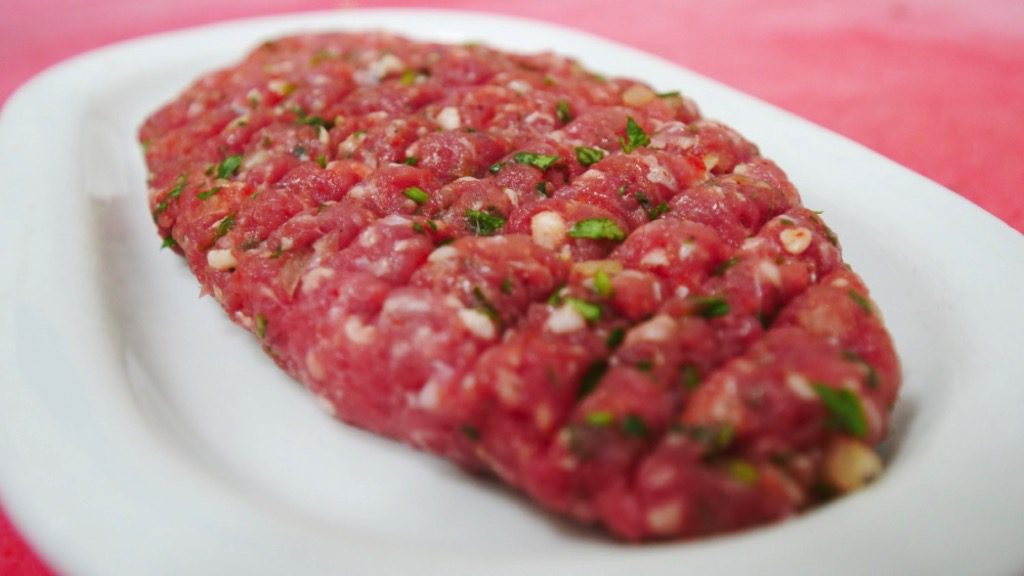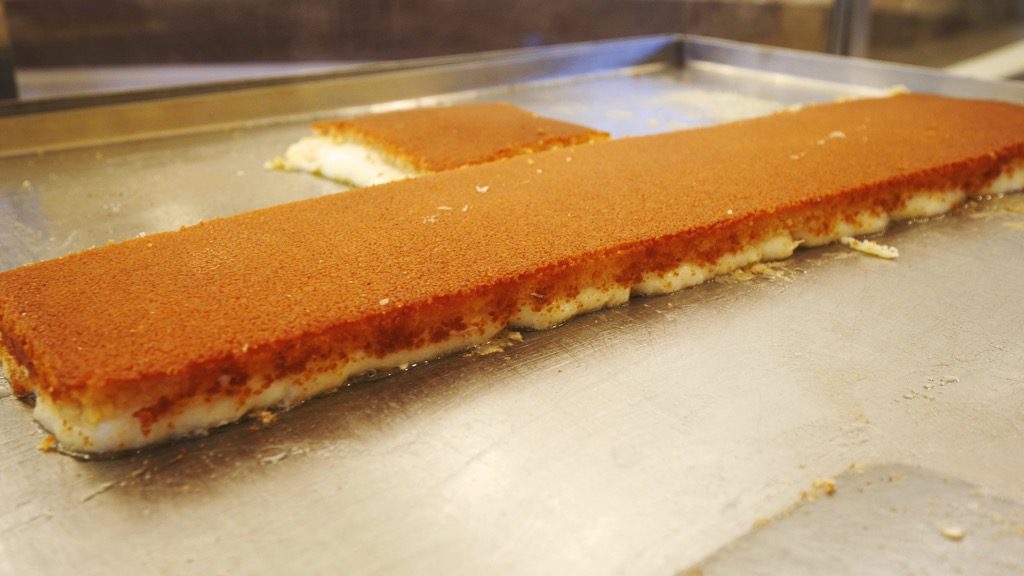When I traveled to Lebanon in January of 2022, its unique blend of flavors, spices, and ingredients blew me away. The country’s rich and diverse flavors have made Lebanese food one of the most sought-after cuisines in the world. Today, I’m taking you on a culinary journey through Lebanon and introducing you to 15 Lebanese dishes you need to try ASAP.

Lebanese cuisine is a combination of Mediterranean and Middle Eastern flavors, with an emphasis on fresh meats, fruits and vegetables, and fresh herbs and spices. They include za’atar (a blend of thyme, sumac, oregano, roasted sesame seeds, marjoram, and salt), garlic, baharat, parsley, mint, fenugreek, allspice, saffron, cinnamon, cloves, coriander, nutmeg, and black and white pepper.

Other Lebanese staples include olive oil, lemon juice, pomegranate molasses, tarator (garlic paste), labneh (a white cheese made from strained yogurt), chickpeas, bulgur, and fava beans. Lamb, chicken, beef, and fish are all popular protein sources.

Lebanese cuisine has a long and rich history, dating back to the Phoenician period. Various cultures have influenced Lebanese cuisine over the centuries. They include the Ottoman Empire, which ruled Lebanon for over 400 years, and the French, who occupied Lebanon in the early 20th century.

Mezze is a traditional way of serving food in Lebanon. Similar to Indian thalis, mezze consists of several small dishes served family-style. Mezze dishes can include anything from hummus and baba ghanoush to stuffed grape leaves and kebabs. Mezze is a great way to sample a variety of Lebanese foods and experience the full range of flavors and textures that Lebanese cuisine has to offer.

Manakish is a popular Lebanese flatbread. Some people refer to it as Lebanese pizza. This flatbread usually comes topped with za’atar and olive oil. More elaborate versions may add cheese, meat, and/or vegetables. A popular breakfast and snack item, you can find manakish at virtually any bakery in the country.

Kibbeh is the national dish of Lebanon, and contains a mixture of bulgur wheat, minced onions, and ground meat or fish. This Lebanese food is usually fried or baked, though some people serve it raw. It often comes with yogurt or a side salad.

Mousabbaha is a variation of hummus that is popular in Lebanon. Adding whole chickpeas to the hummus mixture creates mousabbaha, which has a creamy and chunky texture. Often served with pita bread and vegetables, Mousabbaha makes a perfect appetizer or snack.

Tabbouleh, a refreshing salad made from parsley, tomatoes, onions, and bulgur wheat, perfectly complements grilled meats. It also serves as a light lunch and is also delicious as the filling in a lettuce wrap. Often dressed with olive oil and a splash of lemon juice, it has a fresh and tangy flavor that’s sure to tantalize your taste buds.

Tajin is a Lebanese dip that contains minced fish, tahini, onions, and nuts. It usually serves as an appetizer or snack, and adds a briny flavor and creamy texture to any dish. The tajin I tried during my time in Tyre blew my mind and paired wonderfully with my fish kibbeh. I also had an incredible lionfish tajin in Batroun!

Shawarma is a popular street food in Lebanon that consists of roasted, marinated meat, usually chicken, beef, or lamb. Cooks stack the meat on a vertical spit, roast it next to a heat source, and slice it thinly as it cooks. They then usually wrap it in pita bread along with lettuce, pickles, tomatoes, onions, and sauces like tarator or mayonnaise.

Sawdeh is the Lebanese word for sautéed chicken livers. Marinated in garlic, lemon juice, and spices, sawdeh offers an earthy richness of iron along with a pop of acidity. Sawdeh usually comes with pita bread and vegetables, and it is a perfect appetizer or snack.

Kibbeh naaye is a traditional Lebanese dish that consists of finely minced lamb or beef mixed with bulgur wheat and spices. It often comes with pita bread and vegetables. Kibbeh naaye may seem like a scary dish to try, as it’s raw meat, but it’s a very popular traditional dish in Lebanon that may surprise you if you’re brave enough to give it a chance!

Knafeh is a Lebanese food that contains shredded phyllo or semolina dough and ackawi cheese. and a sweet syrup. It is often topped with chopped pistachios or walnuts and a sweet syrup. The end result is a crispy, creamy, and decadent dessert for those who love sweet and savory flavors. You can eat knafeh by itself, but some bakeries also serve it inside kaak bread or even croissants drizzled with chocolate sauce!

Falafel is among the most popular Lebanese and Middle Eastern street foods in the world. These flavorful fritters primarily consist of ground chickpeas, though some cooks add fava beans and wheat flour. They season the mixture with traditional herbs and spices, form it into small balls or patties, and then deep-fry them until they turn brown and crispy. Falafel often comes inside in pita bread with lettuce, tomatoes, and onions. Sauces and dips like tarator, hummus, and tahini are also popular additions.

Lahm bi Ajeen is a traditional Lebanese flatbread. Similar to Turkish lahmajun, lahm bi ajeen comes topped with ground lamb. Cooks season the lamb beforehand with fragrant herbs and spices before baking it on the uncooked flatbread. Some varieties contain only lamb, while others may add vegetables and various sauces. It’s the perfect lunch, dinner, or snack to munch on while you’re on the go!

Fatteh is a Lebanese dip that combines chickpeas with yogurt, spices, pita bread, and pine nuts. A popular breakfast or brunch dish, fatteh adds a refreshing element to heavier and heartier dishes. It’s also quite healthy and contains lots of fiber and protein.

One of my favorite Lebanese dishes, batata harra consists of fried and seasoned potatoes. These crispy and golden brown morsels are often quite spicy, so be careful if you’re sensitive to heat! Popular in mezze platters, batata harra is also a common side dish or appetizer.

Abou sin is a traditional raw fish dish, usually made from sea bass or red snapper. After marinating the fish in lemon juice and olive oil, the cooks then add various herbs and spices. Abou sin is a popular appetizer and snack that comes along with larger seafood-based meals. The abou sin I tried in Tyre is some of the freshest and most succulent raw fish I’ve ever eaten in my life!

Sfeeha is a traditional Lebanese meat pie containing fresh, ground lamb seasoned with herbs and spices. You can find this dish throughout the country, but it’s most popular in its birthplace, Baalbek. A common snack or appetizer, it’s a staple in bakeries throughout the country. You can also enjoy this popular Lebanese food as fatteh sfeeha, a dish that takes sfeeha and adds it to a bowl of cool, refreshing yogurt

Lebanese food is a true culinary delight, and it offers a wide range of flavors, spices, and ingredients that will satisfy any foodie’s taste buds. From mezze to manakish, kibbeh to knafeh, there is something for everyone in Lebanese cuisine. So book a trip to Lebanon today to experience the vibrant flavors of Lebanese cuisine!
Huge thanks go out to my incredible guides Nicolas Abou Chedid and Armando Maalouf for showing me their beautiful country! This guide wouldn’t be possible without them!
NOTE: If you are traveling abroad and want to earn some money, you may find no experience overseas jobs on Jooble.
Counter
101 Countries • 1432 Cities